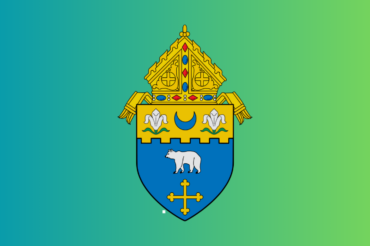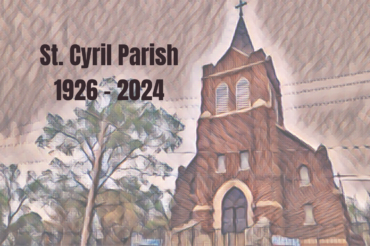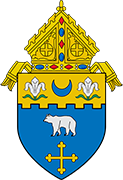Restoration

God’s Word in Everyday Living
Marc Cardaronella
If I ranked Scripture passages by most confusing, this week’s gospel, Matthew 4:12-23, would probably be near the top of my list. Who are Zebulun and Naphtali? Why have they seen a great light? Why is that important? Why does Jesus moving to Capernaum fulfill this prophecy from Isaiah?
This is a case where the first reading is essential for understanding the Gospel. The key verse from the first reading is Isaiah 9:1, “In the former time he brought into contempt the land of Zebulun and the land of Naphtali, but in the latter time he will make glorious the way of the sea, the land beyond the Jordan, Galilee of the nations.”
So, what’s going on here? Zebulun and Naphtali are two of the 12 tribes of Israel. As you probably know, God renamed Jacob to Israel, and the descendants of Jacob’s 12 sons became the 12 tribes that formed the nation of Israel. Zebulun was the son of Jacob by his wife Leah, and Naphtali was Jacob’s son by Bilhah, his wife Rachel’s handmaid. If you don’t know that story, you really should look it up. When the tribes came into the Promised Land after leaving Egypt, Joshua assigned territories to each of them. The tribes of Zebulun and Naphtali received land just east of the Sea of Galilee, an area known as the Way of the Sea. It was valuable land because it provided the best route between the two great economies of the day, Assyria and Egypt. Whoever controlled it also controlled trade in the region, so it was hotly contested.
Eventually, Israel became a kingdom with all 12 tribes united David. However, after his son Solomon’s reign, the 10 northern tribes split from the two in the south. They formed their own kingdom and called themselves Israel. The two tribes in the south became the Kingdom of Judah. It gets complicated because the 12 tribes together were the Kingdom of Israel before the split. However, after the split only the north was Israel…and they weren’t Jews. Only people from Judah, who remained faithful to God and practiced Judaism (Judah-ism), were Jews. Israel worshipped local pagan gods like Ba’al and Molech. This split was a big deal. God’s people were divided and many rejected God’s covenant. As well, prophecies said the Davidic king would rule over the combined 12 tribes of Israel forever. After the split, he only ruled over two. It became a major theme with prophets like Isaiah and Ezekiel that one day the Messiah would unite the 12 tribes again and rule over all of Israel, not just Judah. This may sound simple enough, however in Isaiah’s time no one thought it possible.
A short time before, Assyria launched a series of invasions that began in the territories of Zebulun and Naphtali. Within a few years, the whole northern kingdom was conquered, deported, and scattered across the known world. Not only that, the Assyrians forcibly settled other people on Israel’s land. Even if they did want to come back, they didn’t have a home. Over the years, with no connection to their people and no hope of return, Israelites from the 10 northern tribes assimilated into the local populations. They were essentially lost. Nevertheless, the prophets spoke of an impossibility…a re-unification. The Messiah would unite all of Israel, north and south, under one rule and one worship. How could this be? You couldn’t even find anyone identifiable as Israelites anymore much less get them together.
Here’s where Jesus enters the picture. When John the Baptist is imprisoned, Jesus begins his public ministry. He establishes a home base at Capernaum, which not coincidentally is located at the intersection of Zebulun and Naphtali’s old territories. Then, the first thing he does is proclaim the Kingdom of God. The first reading Isaiah says, “In the former time he brought into contempt the land of Zebulun and the land of Naphtali” (Isaiah 9:1). He’s talking about the defeat and deportation of the northern kingdom that began there. However, he foresees something else coming, a reason for hope. “In the latter time,” Isaiah says, “he [God] will make glorious the way of the sea, the land beyond the Jordan, Galilee of the nations” (Isaiah 9:1). Matthew sees this is the “latter time.” Jesus fulfills Isaiah’s prophecy because Zebulun and Naphtali are the first to experience the restoration of Israel – the New Israel. Jesus begins right where it started to fall apart. How will he do that? As the New David, he will bring the entire world under his reign in the Church, the Kingdom of God. The 10 tribes are lost, spread to the four winds. Even they don’t know who they are. But the Church is worldwide, universal…katholikos in Greek, or “catholic.” It spans the globe. The tribes of Israel are lost to the world, so Jesus will restore the 12 tribes by incorporating the whole world into the New Covenant.
The brokenness of the tribes of Israel represents the brokenness of humanity. Everyone should be united in relationship and union with God. Everyone should recognize Jesus as Lord and share in his kingship. But many don’t know him. Some even reject him. They are scattered and lost, without a spiritual home or lineage. They’re assimilated into the world and its way of thinking. They may not even be aware of the life they’re meant to have or the true homeland where they belong. God doesn’t want families separated or people exiled from their home. It’s our job to continue Jesus’ mission of reconciliation and restoration. We must share the message with those who don’t yet know it or have yet to accept it. We must shine a light of hope into the “deep darkness” of the lost and tell them they have a home!
Marc Cardaronella is Director of the Office of Catechesis and Faith Formation.
For this Sunday’s scripture readings and readings throughout the year, visit the USCCB website.





